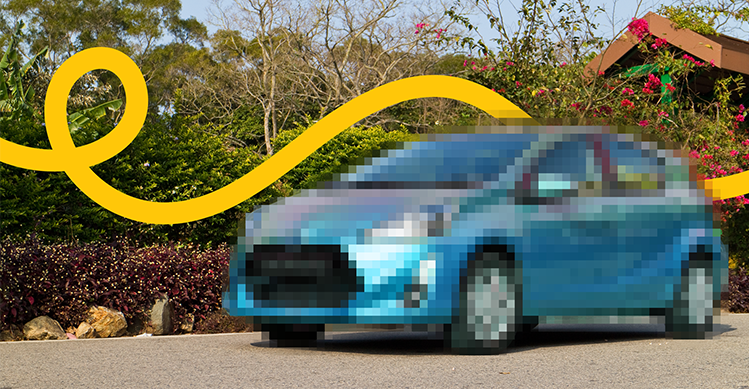Your windscreen is much more than a sheet of glass to keep the bugs off your face and your hair in place. It’s an integral part of your vehicle’s construction. If you have a windscreen chip, it’s important to get it checked and fixed quickly, as it could crack at any time. Repairing a chip will make your windscreen strong again and restore the stability of the windscreen to help prevent further cracks.
Windscreens have come a long way in recent years. In the early 1950s, windscreens shattered into a milky shade of white and sprayed the driver with tiny glass fragments, often causing injury.
Those days are largely over. It’s now common for windscreens to be made of multilayered laminated glass. These new-tech windscreens are extremely strong and capable of withstanding significant force. They add an extra level of safety to your vehicle’s defence system. Modern windscreens also bend slightly on impact and are highly resistant to shattering, even when they’re hit with large objects.
The key take-out here is that your windscreen is a safety feature, making it vitally important to keep it in good condition.
Don’t muck around! Find out as soon as you can whether the chip can be repaired. What you want to avoid is the chip developing into a large crack, which would mean a full windscreen replacement (or an investment in a pair of goggles!).
The location of the chip on your windscreen is also important. If it’s less than 50mm from the edge of your windscreen, then you could be facing a full windscreen replacement. If it’s right in the driver’s line of vision and is 30mm or greater in size, then a replacement may be necessary and a repair not advisable. Of course, a reputable windscreen expert can help here, to make sure the right decision is made and your safety ensured.
Most chip repairs take around 30 minutes, but it depends on the operator and how many chips need repairing. If you’ve been sprayed with road metal from a passing truck, you may be in for a longer wait. Some repairers charge an initial fee for a repair job and then a smaller extra charge for each subsequent chip.
Expect to spend between $85 and $200 for a chip repair. Some windscreen repairers offer a smaller fee ($25 - $35) for each extra chip (as part of the same job). Most repair companies will come to you and their travel cost is built into the overall price. It pays to shop around for pricing, because there’s quite a cost variance from company to company. Make sure you’re going to get a quality repair from a reputable supplier. A useful tip is to look for a company that has multiple branches and has been in business for a number of years – a sign they’re good at what they do and well supported (AMI has a list of preferred suppliers if your repair is covered under your insurance policy).
A special system is used to inject resin into the windscreen chip that ‘patches’ the glass. Once done, the repair shouldn’t be easily detectable and the original clarity and strength of your windscreen glass will be restored.
There are do-it-yourself repair systems available, but leaving it to the experts is almost always a better course of action.
Your vehicle can take a hiding on New Zealand roads, especially if you’re driving backcountry gravel surfaces. Vibration, heat and cold, the forces of wind and slamming a car door can all impact on a windscreen stone chip and potentially turn it into a crack.
It’s much cheaper to repair a chip than wait for a crack to develop. Even so, sometimes a chip develops into a crack before you have a chance to repair it. Remember, some cracks can still be repaired, so it’s wise to get a couple of opinions – especially if you’re paying!
Once a crack develops and it’s left to its own devices, it‘ll inevitably creep until the strength of your windscreen is compromised. This might mean your vehicle no longer qualifies for a warrant of fitness; it could even earn you a traffic offence notice and a fine.
If a crack or chip isn’t fixable, it will take about half a day to remove your old windscreen, install the replacement and allow the urethane seal to cure properly.
In simple terms, the seal on your old windscreen is cut and the windscreen removed. A special primer is applied to the windscreen frame and the windscreen is sealed into place. Some companies will come to you; others will insist on carrying out the repair in their workshop. This often depends on the complexity of the repair.
Your vehicle may have an ‘Advanced Driver Assistance System’ (ADAS). If you have blind spot monitoring, a navigation system with traffic information, collision avoidance and proximity warning, then you have ADAS and this means your windscreen replacement needs to be calibrated. It’s very important that you choose a technician qualified to carry out this calibration. ADAS has been developed to improve your safety and the safety of others, so it’s important that an approved operator carries out your windscreen replacement. It means the information supplied by your ADAS system is accurate.
Get covered with AMI Full Car cover and make sure you include the optional add on - Glass Excess Buy Out. There’s no excess to pay if you’re claiming for accidental damage to your car’s windscreen or window glass.
Already have AMI Full Car cover? Login to your My AMI online account to check your policy documents to make sure you have Glass Excess Buy Out, or get in touch to add it on.


